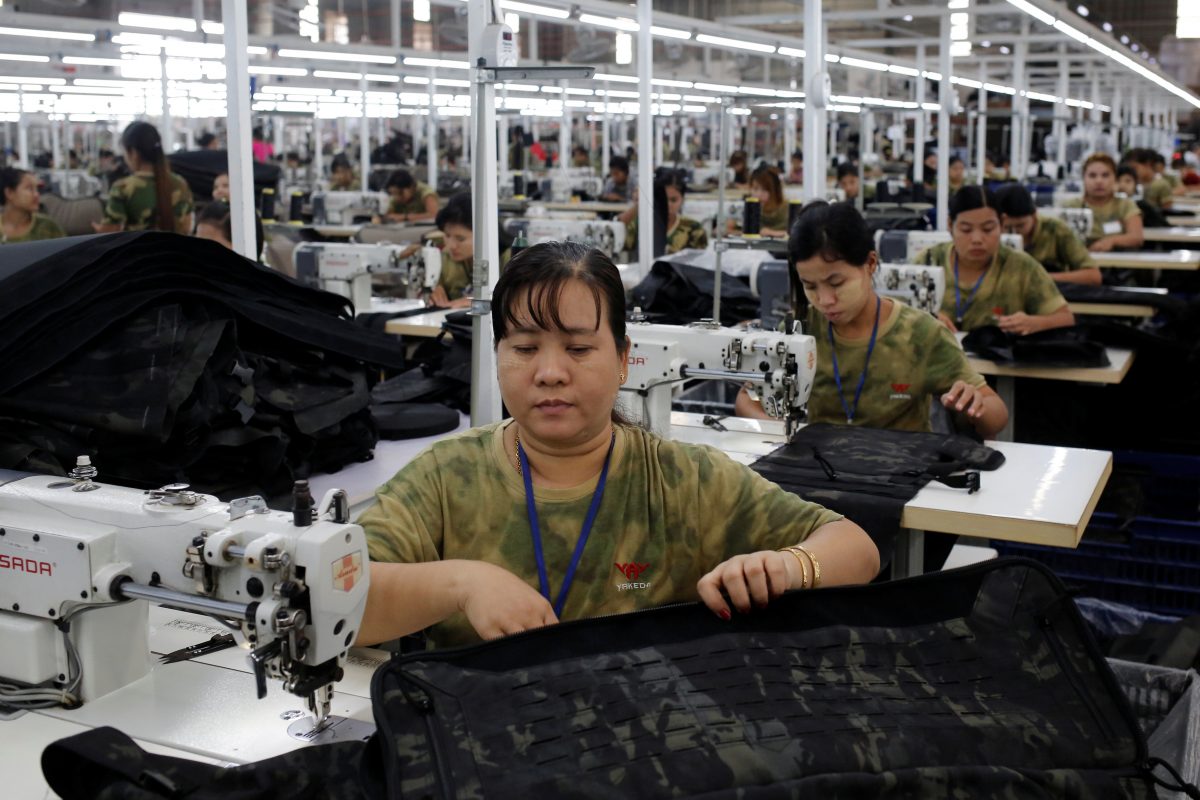China leads the largest investor in Myanmar’s financial hub in the first nine months of the current fiscal year
1 Aug 2019
China was the largest investor in Myanmar’s financial hub, Yangon Region, in the first nine months of the current fiscal year, according to the Directorate of Investment and Company Administration (DICA). China is already the second-largest investor in the country.
The director of DICA’s Yangon Region Office, U Myo Khaing Oo, said on Wednesday that as of July 24, Yangon Region had given the green light to a total of 113 foreign investment projects in the current 2018-19 fiscal year, which ends on Sept. 30. Of those, 65 are by Chinese companies.
“Chinese account for the biggest share,” said U Myo Khaing Oo, who is also secretary of the Yangon Region Investment Committee (YRIC). However, he did not reveal which sector received the most investment from China.
In addition to the Chinese projects, the regional government approved 17 projects from Hong Kong; six each from India and Taiwan; four from Japan; three each from Singapore and the British Virgin Islands; and nine from other countries. The foreign projects were worth a total of US$201.022 million (303.83 billion kyats), according to the YRIC.
Overall, the manufacturing, hotel/tourism, real estate, and fishery sectors drew the most foreign investment during the period.
In May, the regional government held the Yangon Investment Forum 2019, which showcased more than 80 projects to local and international investors. At the forum, the Myanmar government promoted Yangon to investors, citing its strategic location, infrastructure development and emerging workforce.
Despite being the smallest among the 14 states and regions of Myanmar, Yangon Region receives nearly 60 percent of all foreign investment and accounts for almost a quarter of Myanmar’s total GDP.
As of July 10, the Myanmar Investment Commission (MIC) had approved 207 foreign investment projects so far this fiscal year (which started Oct. 1, 2018) worth more than $2 billion. According to the MIC, Yangon received more than $22 billion in foreign investment between fiscal 2011-12 and 2018-19.
Not only in Yangon but also across the country, China is planning to implement multi-billion-dollar projects, including a deep seaport, new cities, industrial parks, border economic cooperation zones and high-speed railway lines under its ambitious Belt and Road Initiative (BRI).
In November, Myanmar officially became a partner in the BRI scheme after signing a memorandum of understanding (MOU) on the establishment of the China-Myanmar Economic Corridor (CMEC). The 1,700-kilometer-long corridor will pass through Myanmar’s major economic hubs including Mandalay in central Myanmar, then going southeast to Yangon before turning west to its end point at the Kyaukphyu Special Economic Zone (SEZ).
Chinese President Xi Jinping’s signature foreign policy initiative, the BRI was unveiled in 2013 (it was then called “One Belt, One Road”). It is expected to encompass a network of roads, railways and shipping lanes linking at least 70 countries from China to Europe passing through Central Asia, the Middle East and Russia, fostering trade and investment.
CMEC will create of the biggest infusions of foreign direct investment (FDI) into the country under the National League for Democracy’s administration, after a period of economic decline dating back to 2016. FDI in Myanmar declined significantly from $5.6 billion in 2017-18 to $6.6 billion in 2016-17 and $9.5 billion in 2015-16 as Western investors were turned off by damage done to the country’s image by the Rohingya crisis in Rakhine State.
In October last year, MIC launched the Myanmar Investment Promotion Plan (MIPP), which aims to attract more than $200 billion in investment from responsible businesses over the next 20 years, particularly countries in East Asia. MIPP projects are expected to receive $8.5 billion from fiscal 2021-22 to 2025-26; $12.3 billion from 2026-27 to 2030-31; and $17.6 billion from 2031-32 to 2035-36.
In late January, Investment and Foreign Economic Relations Minister U Thaung Tun said he believed the BRI was an opportunity to fill Myanmar’s infrastructure gap. He said Myanmar could become an Asian transport hub under the BRI agreement, and that all countries could benefit from BRI projects.
Currently, China is Myanmar’s second-largest source of foreign investment and its top trade partner. From 1988 to June 30, 2019, approved Chinese investment amounted to more than $20 billion—nearly 26 percent of total FDI in the country, according to the MIC.
(The Irrawaddy: https://www.irrawaddy.com/business/china-leads-investment-yangon.html )











